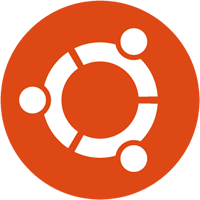The History of Linux #
Linux has an incredible history that’s a testament to the power of open-source collaboration and innovation. From a small personal project to a cornerstone of modern technology, Linux has made a huge impact on the way we use computers today. Let’s take a journey through its origins, development, and the significant milestones that have shaped it.
The Roots in UNIX #
The Linux story starts with UNIX, an operating system that emerged in the late 1960s at AT&T’s Bell Labs. Ken Thompson, Dennis Ritchie, and their team were behind this groundbreaking system. UNIX introduced key concepts like a hierarchical file system and process control, which set a new standard for operating systems.
While UNIX was revolutionary, it wasn’t open-source, meaning its code was mostly confined to academic and research circles. Despite this, its design principles—simplicity, modularity, and reusability—were incredibly influential.
The Birth of GNU #
Fast forward to 1983, when Richard Stallman launched the GNU Project with the vision of creating a free UNIX-like operating system. GNU stands for “GNU’s Not UNIX,” emphasizing its dedication to free software. Stallman aimed to develop an OS that would respect users’ freedoms to run, study, modify, and share software.
The GNU Project made significant strides with tools like the GNU Compiler Collection (GCC) and the GNU C Library (glibc). However, it was missing a crucial piece—the kernel.
Linus Torvalds and the Linux Kernel #
Enter Linus Torvalds, a Finnish computer science student who, in 1991, started working on his own kernel as a hobby. Torvalds wanted to create a free, open-source alternative to MINIX, a small UNIX-like system used for teaching. He shared his project on the comp.os.minix newsgroup and invited others to contribute.
On October 5, 1991, Torvalds released the first version of the Linux kernel, version 0.02, under the GNU General Public License (GPL). This marked the start of a global collaboration that would lead to the creation of a fully functional, free operating system known as GNU/Linux.

Linus Torvalds, the creator of the Linux kernel
Growth and Adoption #
The early 1990s were a time of rapid growth for Linux. Its open-source nature meant that anyone could contribute, leading to new features and improvements. The Internet played a crucial role, allowing developers to share code, discuss ideas, and fix bugs together.
A major milestone was the release of the Linux 1.0 kernel in March 1994. This version brought greater stability and usability, attracting more users and contributors. Around the same time, distributions like Slackware and Debian made Linux more accessible to everyday users.
The Rise of Distributions #
A Linux distribution, or distro, is essentially a complete operating system built around the Linux kernel, combined with GNU components and various applications. Different distros cater to different needs and preferences.
Red Hat #
Founded in 1993, Red Hat quickly became a major player in the Linux world. Its flagship product, Red Hat Linux, was widely adopted in enterprise environments for its stability and support. Red Hat’s creation of the RPM package manager and its contributions to the open-source community have had a lasting impact.
Debian #
Debian, started by Ian Murdock in 1993, is known for its commitment to free software and high-quality standards. Its package management system, APT, and its extensive software repositories have made Debian a foundation for many other distributions, including Ubuntu.
Ubuntu #
Ubuntu, launched in 2004 by Canonical Ltd., aimed to make Linux more accessible to the general public. With its user-friendly design and regular updates, Ubuntu quickly became one of the most popular distributions. It played a key role in bringing Linux to more desktop and laptop users.

Ubuntu, a user-friendly Linux distribution
Linux in the Enterprise #
By the late 1990s and early 2000s, Linux was making waves in the enterprise world. Its stability, security, and cost-effectiveness made it a viable alternative to proprietary systems. Major companies like IBM, Oracle, and Google began using Linux for their servers and infrastructure.
The release of the Linux 2.6 kernel in December 2003 brought even more features, such as better scalability and hardware support, reinforcing Linux’s reputation as a reliable platform for critical applications.
Open Source and Community #
Linux’s success is deeply rooted in its open-source nature and the active community behind it. The open-source model promotes transparency, collaboration, and ongoing innovation. Developers around the world can inspect, improve, and contribute to the project, creating a cycle of continuous enhancement.
The Linux Foundation, established in 2000, plays a crucial role in supporting the Linux ecosystem. It organizes conferences, funds development, and provides resources for projects like the Linux kernel, Kubernetes, and Hyperledger.
Modern Linux and Its Impact #
Today, Linux is everywhere—from smartphones and supercomputers to web servers and IoT devices. Android, which is based on the Linux kernel, dominates the mobile market. Meanwhile, Linux powers a significant portion of the world’s servers, including the infrastructure of the Internet.
Linux’s flexibility makes it ideal for various uses. Its lightweight nature suits embedded systems and IoT devices, while its scalability and performance are crucial for high-performance computing and cloud infrastructure.
Mathematical Concepts in Linux #
While Linux development isn’t heavily reliant on advanced mathematics, some mathematical concepts are key to its performance. For example, the scheduling algorithms in the Linux kernel are crucial for process management and system efficiency.
Scheduling Algorithms #
The Completely Fair Scheduler (CFS), introduced in Linux 2.6.23, is designed to allocate CPU time fairly among processes. It uses a red-black tree to manage processes, where each node represents a process’s virtual runtime. The process with the smallest virtual runtime gets to run next, ensuring fairness.
Load Balancing #
Load balancing in multi-CPU systems also involves mathematical principles. The Linux kernel uses algorithms to evenly distribute tasks across CPUs, optimizing performance and reducing latency.